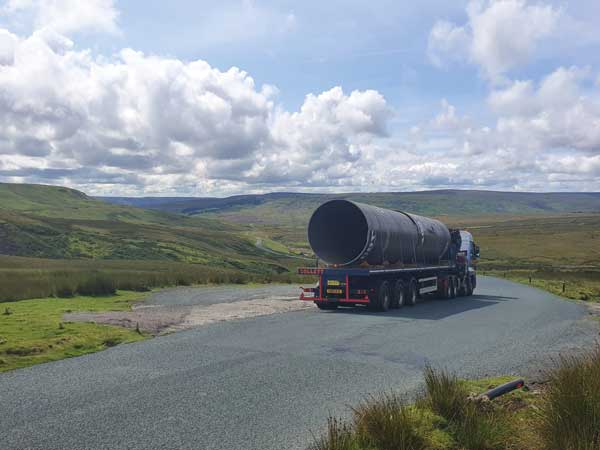Projects and Features
Reducing material costs, lead time and carbon
Founding Steel for Life sponsor Cleveland Steel & Tubes says one of the best options for reducing embodied carbon in steel construction is the supply of repurposed steelwork.
Family-owned since 1975, Cleveland Steel & Tubes (CST) is a market leader in the supply of repurposed steel tubes from its 100-acre facility in North Yorkshire that typically has 80,000t of onsite stock.
“The last 18 months in particular have demonstrated the huge importance of being able to deliver materials on time and on budget, while repurposing surplus steel helps tick all of the boxes,” says CST Sales Director John Zywica.
Repurposing surplus steel stock has the triple advantage of reducing material costs, reducing material lead time, and ever more critically – helps to reduce embodied carbon. Life Cycle Analysis research demonstrates that repurposing surplus steel has the potential to save 94% carbon when compared to material produced to order.
The British Constructional Steelwork Association (BCSA) highlights material reuse in its recently published roadmap to net-zero, while BS EN 15804 now mandates the reporting of Module D carbon emissions. Module D benefits are calculated based on the avoided impacts of primary production. By repurposing surplus steel into a project’s design, clients are reducing their scheme’s embodied carbon and contributing to the circular economy.
More and more clients, contractors and fabricators are now paying closer attention to the environmental impact of their projects. Consequently, many BCSA members are reaping the environmental and cost benefits of repurposing surplus steel tubes in their projects.
For example, CST says one steelwork contractor recently chose to use repurposed oilfield tubulars as bracings on a distribution centre project, which resulted in a reduction in the client’s carbon footprint. Another steelwork contractor chose to utilise surplus wind turbine tubes as temporary steelwork on a bridge repair job.
According to CST, a Network Rail project is repurposing around 2,000t of subsea pipeline tubular steel for ground engineering works. It is calculated that Network Rail will save in the region of 5,000t of carbon by substituting surplus pipes for new production material. The project has also significantly reduced its material costs and lead time by using this surplus stock.
“We now present material reuse seminars with architects and design engineers on an almost weekly basis,” explains CST Managing Director Roy Fishwick. “Previously, it used to be on an annual basis.”
CST aims to support this work by positioning itself as a market leader in expertise. It has supported the research and publication of a Steel Reuse Protocol; founded on the principle that with appropriate determination of material characteristics and tolerances, refabricated and reclaimed steelwork can be fabricated and CE marked in accordance with BS EN 1090.
While supporting existing members of the steelwork sector with practical, ready-to-use guidance, the company is also looking to the future by supporting further research.
Working with the University of Bath, CST is fully funding an industry focussed PhD titled; Enabling Steel Reuse in the UK.
“New generations of professionals within our industry have rightly placed the environmental concerns of our clients in centre stage,” sums up Mr Fishwick.
“We hope that in supporting practical industry guidance, and encouraging critical thinking in research, we can aid our industry, the BCSA and its members in its steel reuse endeavours.”
Cleveland Steel & Tubes
is a gold sponsor of Steel for Life










